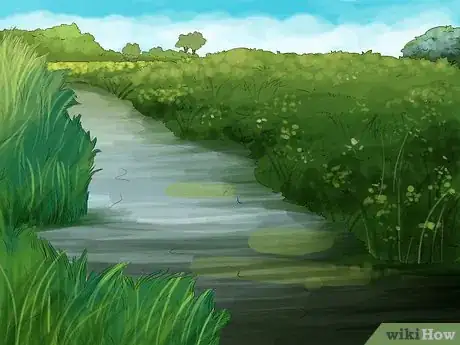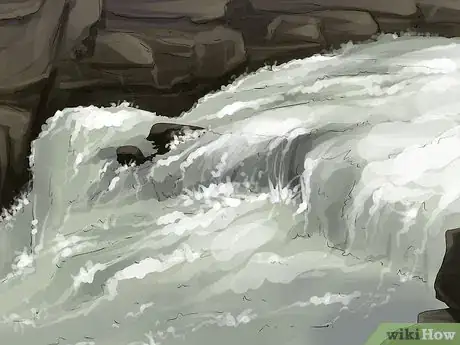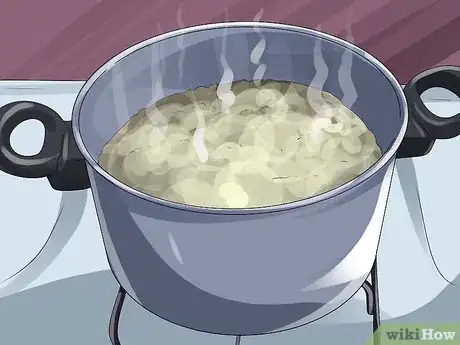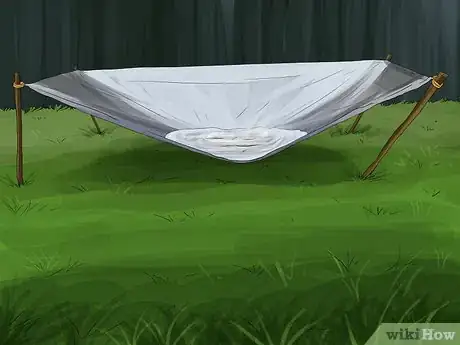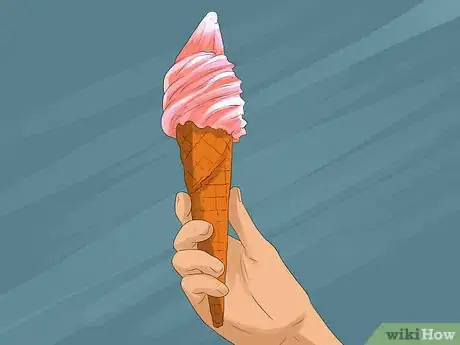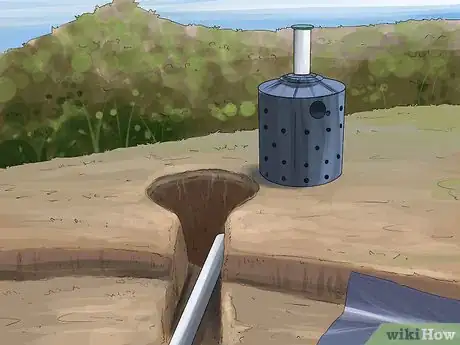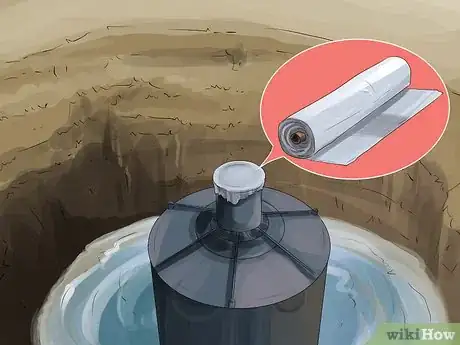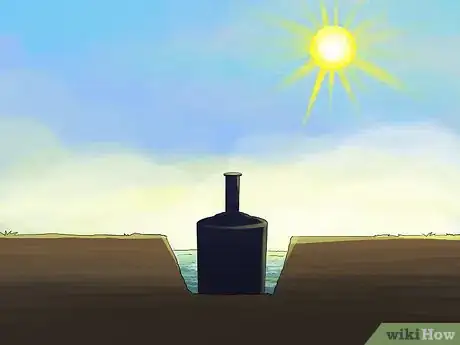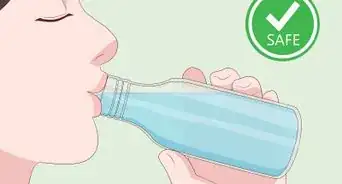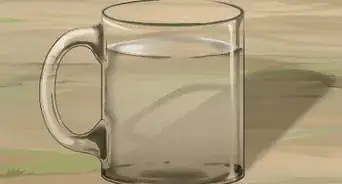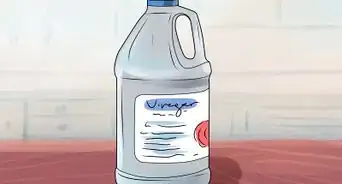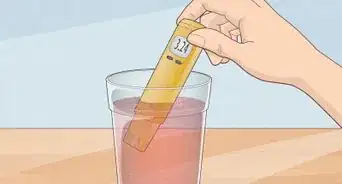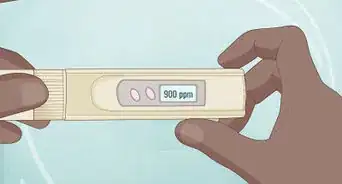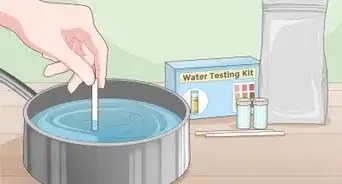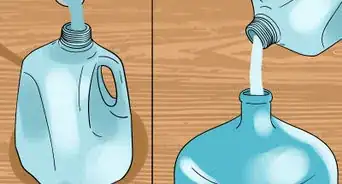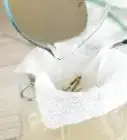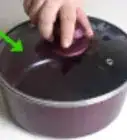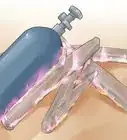X
wikiHow is a “wiki,” similar to Wikipedia, which means that many of our articles are co-written by multiple authors. To create this article, volunteer authors worked to edit and improve it over time.
This article has been viewed 17,189 times.
Learn more...
Water is the most important resource in a survival scenario. Whether it's recreational camping or a life or death situation, water must be the number one priority. There are multiple ways to obtain water in the wilderness.
Steps
Part 1
Part 1 of 5:
Bodies of water
-
1Be aware that there are multiple kinds of freshwater sources available in the outdoors. The most obvious of these are rivers, creeks, or lakes. These can be located primarily in depressed areas such as valleys, and near vegetation.
- Remember that plants need water to survive too. Where there are plants, there is water of some form.
-
2Look for a flow. When taking water from one of these sources, try to find a flowing source. Stagnant water can house parasites, insect eggs, and animal waste that have been festering and can cause severe illness and, in some cases, death. While flowing water is preferred, it can still house some of these hazards.Advertisement
-
3Purify and filter the water using clean materials. A clean, unused sock can be filled with layered materials to remove dirt and other solids from the water, along with charcoal to remove chemical contaminants. This can be done by boiling the water in a clean metal container.
- Place the container on hot embers, or preferably hanging it over a fire so the flames are just "licking" the bottom of the container. Even if the water looks pure, it can house health hazards. Boiling water kills off harmful bacteria and other microscopic organisms that may be looking to cause you to have illness.
- Alternatively, water purification tablets or filters can be used to remove pathogens.
- In order to cleanse stagnant and sludgy water, chemical purifiers or a solar still should be used to remove solid pathogens.
- Some water should not be considered fit for drinking under any circumstances. Examples of this water include swamp water or water that has deceased animals in or around it.
Advertisement
Part 2
Part 2 of 5:
Collecting water from precipitation
-
1Harnessing the power of the weather. This is a less conventional approach but may be helpful.
-
2Prepare to collect if it looks like it is going to storm. Lay out clean containers and clean plastics or other materials to collect rainwater. It is important that these surfaces are clean. Pathogens can rest on items such as tarps, ponchos, or other plastics. Rainwater itself can be consumed without treatment, but it is still safe to boil it anyway. Many campers contract illnesses from drinking water off tarps that have seldom been cleaned.
-
3Utilize snow. Snow can be an excellent source of fresh water, but if possible should not be consumed without boiling. Munching on snow can cool the body the same way eating ice cream makes you colder. This can cause problems when you are out in a cold environment for a period of time. Hypothermia can creep in very fast and it is important to protect yourself from it the best you can.
Advertisement
Part 4
Part 4 of 5:
Solar stills
-
1Use a still. If you only have access to salt water or have no fire, a solar still can be used to collect fresh water from these sources. A solar still uses the sun to evaporate and separate fresh water out of solutions.
-
2Find a large container such as a bucket, or dig a small, about hand-sized or two-hand sized hole in the ground. Place a smaller container such as a cup or canteen in the middle of the container or hole and put the liquid around it in the larger container.
-
3Place a clear plastic sheet over the containers, and place a slightly heavy object or a bit of dirt over the mouth of the smaller container but on top of the plastic. It is important that this creates a slight downward slant toward the mouth of the smaller container, but the plastic is not touching the mouth of the smaller container. This will cause the water evaporated to dribble down the plastic and drip into the smaller container.
-
4Let this sit in the sun for a few hours. After this time, you should have a modest amount of fresh water. If you don't have access to salt water, you can substitute it with urine. Les Stroud used a solar still method by urinating into a hole, placing a plastic cup in the middle of it, laying plastic wrap over the hole, and placing a bit of dirt on top of the plastic over the cup.[citation needed] After a few hours, he had about half a small plastic cup of fresh water which he drank straight away. In a desert or similar climate, this can work in tight spots.
Advertisement
Warnings
- Never place yourself in a camping or survival situation where you have no way out. Always let someone know where you are, when you will be back, what you're doing and other key pieces of information. Always bring a map or GPS and some way of signalling help, as well as a reliable fire starter. Always have a fall back plan.⧼thumbs_response⧽
- Never push yourself beyond your knowledge. Tediously research your area, methods, equipment and the like. Start slow, and ease into making the situation more challenging. (for example bring enough water to survive even if you plan on gathering water from the environment.)⧼thumbs_response⧽
- Always purify water before consumption! Boiling is the safest method, but other methods exist to keep pathogens out of your drinking water.⧼thumbs_response⧽
- Survival camping is very dangerous. It's a rough world out there, be prepared to face challenges. You take your life into your own hands when practicing techniques like these. Be prepared and remember: research, research, research.⧼thumbs_response⧽
Advertisement
References
About This Article
Advertisement
